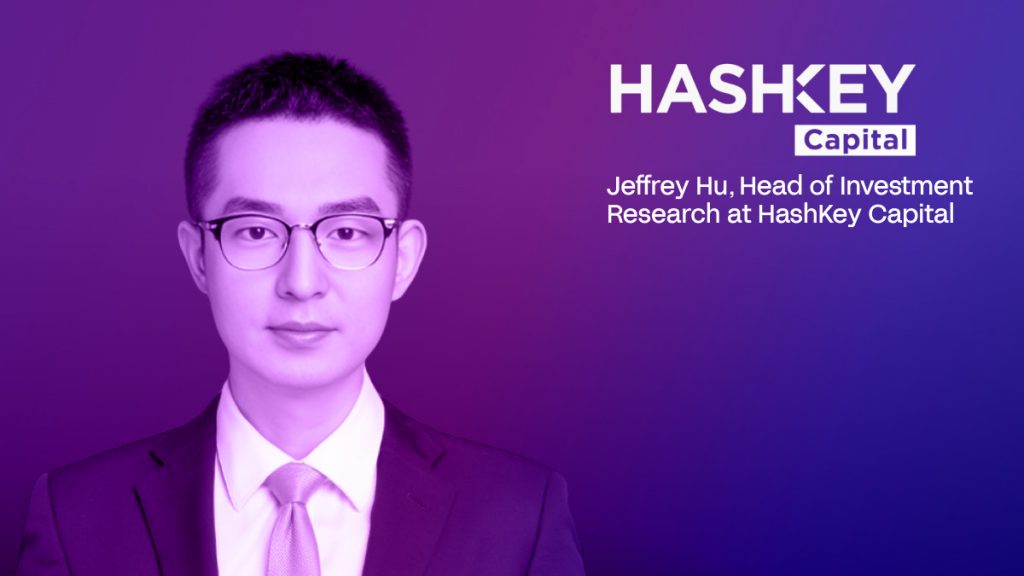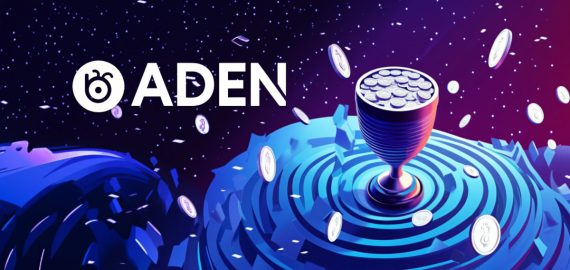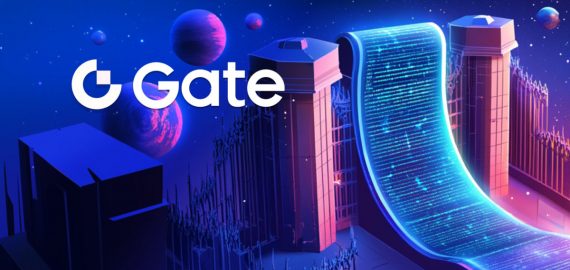Jeffrey Hu of HashKey Capital: How TON Blockchain is Redefining the Future of On-Chain Gaming


In Brief
Jeffrey Hu discusses Telegram-based gaming within the TON blockchain ecosystem, its strategic significance, casual gaming trends, innovative projects like Catizen, and investment insights.

In this interview, Jeffrey Hu, a Research Analyst at the HashKey Capital, delves into Telegram-based gaming within the TON blockchain ecosystem. He discusses the strategic significance of Telegram’s massive user base, the growing trend of casual and blockchain-integrated games, and how innovative projects like Catizen are setting new benchmarks for success. Hu also shares valuable investment insights and forecasts the next big trends in this sector.
What initially attracted you to TON blockchain? How has it influenced your investment strategy in the on-chain gaming sector?
We’ve been closely monitoring the development of TON over the past few years. The recent launch of mini apps on Telegram was an exciting inflection point. Telegram’s massive user base of 900 million users provides unparalleled reach for game developers and investors. This built-in audience significantly reduces user acquisition costs.
Engagement among those users is also very good. Telegram has a highly sticky user base with very active daily users. This high level of engagement translates to more opportunities for game discovery and sustained player interest.
Telegram’s integrated crypto rails make it one of the easiest platforms for users to transition into Web3. This lowers the barrier to entry for crypto-curious users and provides a seamless experience for those already familiar with blockchain technology.
As the platform continues to attract both users and content creators, it’s becoming a dynamic ecosystem with constant innovation, fresh experiences, and new concepts. We’re always looking for applications that can capitalize on a protocol’s inherent advantages, such as Telegram’s large user base, high engagement, and integrated crypto features.
With the rise of Telegram-based games, how do you evaluate the potential of these games to reach mainstream audiences compared to traditional mobile or console games?
When evaluating the potential of Telegram-based games to reach mainstream audiences, we consider a variety of factors. Accessibility is key, as Telegram games benefit from the platform’s massive user base, providing instant access without the need for separate app downloads. The low barrier to entry, thanks to integrated crypto features, makes it easier for users to transition into Web3 gaming.
We also consider the growing trend of casual gaming, which is expected to reach nearly $27 billion by 2029. Telegram-based games, often casual in nature, are well-positioned to tap into this market. The platform’s highly engaged user base provides more opportunities for game discovery and sustained player interest compared to traditional app stores.
When looking at specific projects, we focus on the team’s ability to execute their vision, a long-term product roadmap that extends beyond initial hype or airdrops, and a creative, resilient mindset. Monetization potential is crucial, with some Telegram games starting to monetize early while growing their user base, leading to higher margins and average lifetime value.
While Telegram-based games may not directly compete with high-end console or PC games, they have significant potential to capture a large portion of the casual gaming market. Their accessibility, low entry barriers, and potential for viral growth within the Telegram ecosystem make them well-suited for reaching mainstream audiences.
What unique qualities or innovations does Catizen bring to the Telegram gaming space?
Catizen was notable for several reasons. First, it focused on monetization from the outset, offering in-game purchases while still growing its raw user base. This approach allows the team to learn about user spending habits and behaviors early on, enabling them to build a more sustainable game in the long term.
Due to its monetization strategy, Catizen’s gaming ecosystem has a higher margin and average lifetime value than most projects of their size. This has created great potential to build on its early momentum, as we’ve seen with the recent launch of the Game Center.
The Game Center is part of Catizen’s ecosystem approach, which looks to create not just one game but many ways to play. The launch has been a success, with hundreds of thousands of new users and existing users spending more time playing within the Catizen world. This suggests that Catizen is building a broader gaming ecosystem rather than just a single game – exactly what we’re looking for when investing in a gaming studio.
As for lessons learned, other gaming studios should consider early monetization while still growing the user base. This can lead to better financial outcomes and a more sustainable business model. Of course, it’s important to find a balance between growing the user base and implementing monetization strategies. Also, expanding beyond a single game to create a broader gaming ecosystem can lead to increased user engagement and additional revenue streams.
Can you elaborate on the specific trends you are seeing in Telegram gaming? Are there any particular genres or gameplay mechanics that seem to be more popular or profitable?
Tap-to-earn (T2E) games have become quite popular, though the market for these games is becoming saturated. There’s also a growing interest in expanding Mini Apps beyond just gaming, suggesting a trend towards more diverse applications within the Telegram ecosystem.
Casual games continue to be prominent, with blockchain-based reward systems often mimicking traditional in-game coin systems. The integration of crypto features, facilitated by Telegram’s connection with the TON blockchain, is driving the development of these on-chain approaches to gameplay.
Additionally, there’s a trend towards multi-game ecosystems, with studios like Catizen developing brands that span multiple games. While we can’t specify particular genres or gameplay mechanics that are more popular or profitable, we emphasize the importance of focusing on retention and engaging gameplay that rewards players in interesting ways, not necessarily just with monetary incentives.
As an investor, what are the most critical factors you look for when evaluating a new game or project in the Telegram gaming ecosystem?
When evaluating new games or projects in the Telegram gaming ecosystem, we consider several critical factors. We look for projects that can start monetizing early while still growing their user base, as this approach can lead to higher margins and average lifetime value. User retention is another crucial factor, with a focus on keeping players engaged beyond initial airdrops or token generation events.
The ability to drive long-term engagement through fun gameplay and creative reward systems is highly valued. The team’s execution skills are also important, including their ability to identify successful business models and implement their vision effectively. Teams need creative and resilient mindsets that are capable of evolving, pivoting, and adjusting to market conditions. We favor projects with long-term product roadmaps that extend far beyond an initial hype phase and have the vision to build brands rather than single games.
Could you discuss any specific investment opportunities within the TON ecosystem that HashKey Capital finds particularly promising at the moment?
The most promising projects within the TON ecosystem are the ones that focus on quality gameplay that attracts an engaged user base willing to spend some money – rather than just get things for free. It’s not easy, but Catizen is proof that it can be done.
We like to see projects that target Telegram-native users, rather than trying to attract outside users only. We’re also interested in studios with a vision to create a stable of games that build not only a following but a community. We want projects to be clever and creative, tapping into Telegram’s gaming ecosystem strengths, including its massive built-in audience, integrated Web3 and crypto features via the TON blockchain.
Can you share some insights on the user demographics of Telegram games? Are there specific regions or age groups where these games are particularly popular?
Telegram has over 1 billion active users across nearly every country in the world. That’s what makes it such a vibrant and attractive ecosystem for gaming startups. As we’ve seen with gaming on mobile phones, casual games appeal to nearly every demographic and age group.
What do you believe is the next big trend or development in the Telegram gaming ecosystem?
Interoperability is already beginning to appear in Telegram gaming. There’s massive potential for games to work together and provide utility for assets that extend beyond a single brand universe. We’re also seeing quite impressive creativity in projects that are building complex games for Telegram that you wouldn’t normally expect to see within a social messaging platform.
What excites you most about the future of Telegram gaming and its potential impact on the gaming industry as a whole?
Mini apps were only just introduced in 2023 – so think of how quickly we’ve seen Telegram gaming explode. This is really just the beginning! We will see several long-lasting brands emerge from this cycle, brands that go on to build entire worlds that extend beyond Telegram. There will definitely be some major value creation in this space in the months to come, especially as more people are drawn to Telegram.
Disclaimer
In line with the Trust Project guidelines, please note that the information provided on this page is not intended to be and should not be interpreted as legal, tax, investment, financial, or any other form of advice. It is important to only invest what you can afford to lose and to seek independent financial advice if you have any doubts. For further information, we suggest referring to the terms and conditions as well as the help and support pages provided by the issuer or advertiser. MetaversePost is committed to accurate, unbiased reporting, but market conditions are subject to change without notice.
About The Author
Victoria is a writer on a variety of technology topics including Web3.0, AI and cryptocurrencies. Her extensive experience allows her to write insightful articles for the wider audience.
More articles

Victoria is a writer on a variety of technology topics including Web3.0, AI and cryptocurrencies. Her extensive experience allows her to write insightful articles for the wider audience.

















































